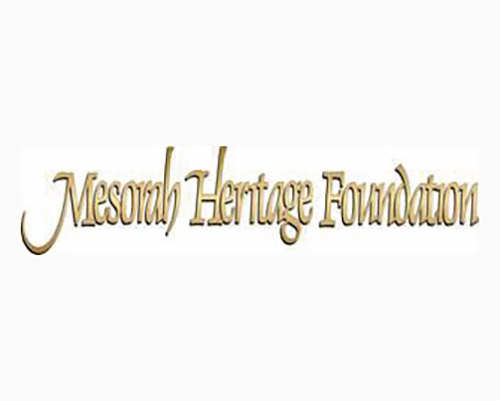
(Courtesy of Artscroll) It was at the Sixth Knessiah Gedolah of Agudath Israel, in Jerusalem, that a historic proclamation was made. The day was 18 Teves, 5740/1980. The speaker was the Lev Simchah, the Gerrer Rebbe. The proclamation was that it was time for the Torah world to begin a new Daf Yomi program, the daily study of Talmud Yerushalmi. The Yerushalmi Daf Yomi program takes 4.5 years and it is now celebrating its ninth siyum. The next Daf Yomi begins on August 4.
The Schottenstein Editions of the Talmud Bavli in Hebrew and English—and in French, as the Edmond J. Safra Edition—have contributed tremendously to the spread of Talmud study in general, and Daf Yomi study in particular. It has been estimated that of the 90,000 participants at the MetLife Stadium celebration of the last siyum, more than half were there thanks to ArtScroll’s authoritative editions. Now the same is happening regarding the Yerushalmi.
New Era of Yerushalmi Study
In recent years, the Yerushalmi Daf Yomi program has gained growing impetus, thanks to ArtScroll/Mesorah’s Schottenstein Edition in both Hebrew and English. Historically, study of Yerushalmi was extremely limited and difficult. Roman hatred and persecution of the Jewish Yishuv in Eretz Yisrael remained intense after the destruction of the Second Beit Hamikdash and the failed Bar Kochba rebellion. In approximately 400 C.E., Rome’s relentless pressure forced an end to the development of the Yerushalmi, before it could be completely organized and edited. The style of the Yerushalmi is terse and difficult, and its Aramaic dialect is different from that of the Talmud Bavli. Due to Roman cruelty, there were very few handwritten manuscripts and they were not available for centuries; according to many authorities, Rashi never saw the Yerushalmi. And when texts were found, they were filled with errors. The result was that Yerushalmi was neglected for centuries and could be understood only by the greatest scholars. And — there was no Rashi commentary!
The Necessity to Study Yerushalmi
Such historic luminaries as Arizal and the Vilna Gaon advocated study of Yerushalmi. Rambam frequently rules like the Yerushalmi over the Bavli. HaRav Chaim Kanievsky urges that Yerushalmi be studied in conjunction with the Bavli, and his regular shiurim on Yerushalmi are transcribed and published. Especially in our time, study of Yerushalmi is essential because only the Yerushalmi—not the Bavli—has Gemara on Seder Zeraim, which makes it the primary source for the day-to-day agricultural laws of Israel. Study of the Yerushalmi is becoming more popular. But the lack of commentaries and the difficulty of the text make Yerushalmi study almost impossible for the ordinary scholar, much less the layman.
The ArtScroll/Mesorah Edition
Now, thanks to ArtScroll/Mesorah, that has changed. In the words of Rabbi Yehezkel Danziger, editorial director of the project, “The Schottenstein Edition provides a thorough explanation of the text and makes the Yerushalmi accessible to everyone, in both English and Hebrew.” It includes a corrected text of the Gemara. At the urging of HaRav Chaim Kanievsky, ArtScroll has added commentaries not readily available, including that of Rav Shlomo of Sirilio, which Rav Chaim recommends most highly. The ArtScroll elucidation is based not only on the commentaries printed in the familiar Vilna Edition, but also on other excellent works. In addition, where necessary, the editors include an elucidation of alternate versions of the Talmud text, such as that of the Vilna Gaon. This edition also discusses cases where the Yerushalmi diverges from the Bavli.
Encouragement of Gedolim
The work was begun with the encouragement of HaRav Yosef Shalom Eliyashiv and other great Torah leaders in Israel and America. After examining the new edition, HaRav Aharon Leib Shteinman was so impressed that he adopted it as the text for his weekly shiur in Yerushalmi, and he graciously sent a letter of commendation.
To date, the ArtScroll/Mesorah edition comprises all of Seder Zeraim and Seder Moed in Hebrew and English, as well as some of Seder Nashim and Seder Nezikin. Forty-three volumes are currently available in English and 29 in Hebrew. The elucidation is already acknowledged as a classic. Large teams of scholars in America and Israel are hard at work producing further volumes.
In the words of Rabbi Meir Zlotowitz, the founder of ArtScroll/Mesorah, “This may well be the most important project we have ever undertaken, because Yerushalmi was like a treasure locked in a vault without keys for more than 16 centuries. Baruch Hashem, that is no longer the case.”
The next cycle starts on August 4… Now you can be a part of it!”
For more information on purchasing, visit: http://artscroll.com/Search/Schottenstein%20Talmud%20Yerushalmi.aspx.










